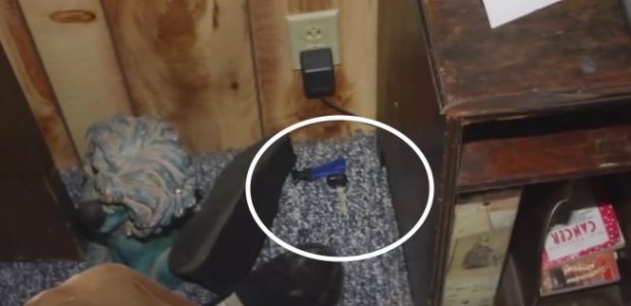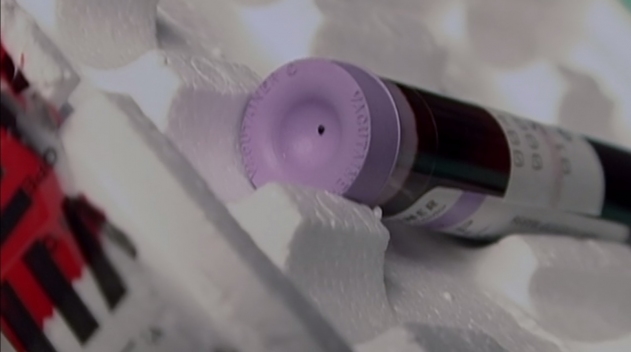
MAKING A MURDERER is a ten-part documentary on Netflix, directed by Laura Ricciardi and Moira Demos, about the trials and convictions of Wisconsin resident Steven Avery. Avery was wrongfully convicted of raping a woman then exonerated, and later arrested in a murder case for which he was subsequently sentenced to life without parole. He became the prime suspect in the homicide because the victim, Teresa Halbach, had an appointment with Mr. Avery on the day of her disappearance at the family compound where he lived. Nobody reported having seen her after this meeting–the car she drove and her burnt remains were found on the compound. There was no known motive but he would have had the opportunity. He had no alibi, and physical evidence–specifically DNA–linked him to the victim’s car.
Mr. Avery was incriminated by his nephew, 16-year-old Brendan Dassey, who confessed to having participated in the murder of Ms. Halbach and the burning of the victim’s body. Mr. Dassey confessed on three different occasions, but later recanted his statements. Despite the defense’s contention that these confessions were coerced, and that Steven Avery himself had been framed by the local sheriff’s department, both were convicted and none of the appeals have been decided in their favor so far.
What exactly was the physical evidence presented against Steven Avery and could it have been planted as claimed by the defense? To properly assess this question, one would normally need access to all of the case documentation and reports, not just the material included in the documentary and available online, so everything being said here needs to be considered as speculative.
This was a very complicated and confusing case with the investigation hampered by the fact that the victim’s body had been burnt. The small bone fragments recovered from three different burn sites yielded limited information on the type of trauma inflicted on the body. One skull fragment showed a gunshot injury to the victim’s head, and the prosecution claimed that Mr. Avery’s garage was the crime scene where Teresa Halbach was shot. But the theory of this homicide also had to accommodate Brendan Dassey’s confession of stabbing and later cutting the victim’s throat while she was tied to Mr. Avery’s bed. MAKING A MURDERER never revealed what exactly the prosecution hypothesized to be the alleged sequence of events explaining all the different pieces of evidence.
The physical evidence discussed in the documentary consisted of human blood and/or human DNA found in three different areas: Steven Avery’s bedroom, his garage, and Teresa Halbach’s car. Other sources like The New York Times and TechInsider report on additional evidence introduced during the trial but not included in the documentary. A user group on Reddit is currently engaged in a project of posting all available Avery case material online, which is where I was able to access copies of the Wisconsin State Crime laboratory and FBI laboratory reports. Without this additional information it would have been impossible to discuss the forensic testing in a meaningful way.
One of the most puzzling findings was that there was no trace of the victim’s blood on the bed or on any other item in the bedroom, despite the alleged knife injuries. The prosecution claimed the defendants had sufficient time to remove all evidence. But, if Mr. Dassey’s account is to be believed, this would have been quite extensive and they would have needed to replace the mattress. In my opinion, the absence of any trace of the victim’s blood in the bedroom is an inconsistency that casts doubt on the confession.
The bedroom yielded one probative item of evidence: Teresa Halbach’s car keys with traces of Steven Avery’s DNA. This item was lying on the floor but had been missed during several previous searches. The defense brought up three problematic areas supporting their claim that this piece of evidence had been planted:
The first concern was the delayed detection–overlooking such an item at a crime scene is certainly curious.
The second issue was the absence of Halbach’s DNA on her own car key, but this is not a valid concern and can be explained. The Wisconsin State Crime laboratory report from November 14, 2005 lists the car key as item C, “one Toyota key attached to a blue key ring,” and only one DNA result is reported for this item. This indicates that the top of the key itself, where one would expect to find Teresa’s DNA, was not tested. The blue fabric lanyard connection described as a “key ring” looked stained in the documentary. Even though this brownish smear apparently was not tested for the presence of blood, it is safe to assume that the stained area was selected for DNA typing. The laboratory reports find a male profile matching Steven Avery and with this being a single source complete 15 marker profile there is no doubt as to this interpretation. The sample was not a DNA mixture, even though a car key attachment is handled frequently and should normally show its owner’s DNA. But touching an item leaves less DNA behind than is present in a biological fluid, for example blood. The current polymerase chain reaction-based DNA typing method will not detect a minor component in a DNA sample beyond a 1:50 mixture ratio, which means it is not unexpected that there was no sign of a mixture and Teresa Halbach’s DNA in the male profile.
The third argument for this evidence having been planted was the fact that the Sheriff’s department could have had access to a sample of Mr. Avery’s blood. The Manitowoc County clerk was storing a liquid blood sample stemming from the 1985 rape investigation. Here, the defense discovered that the evidence tape used to seal the outer packaging of the tube had been severed and the box was no longer sealed. Based on other information reported in the media the package had actually been opened for legitimate reasons, but without a new seal somebody would have had access. MAKING A MURDERER also showed the defense attorneys examining a supposedly suspicious needle puncture in the purple rubber top of the blood tube. But this is not unusual at all–the rubber top is pierced during blood collection when connecting the tube to a needle in the syringe hub used for venipuncture. Again, this does not mean no blood could have been taken out. Anybody wanting to obtain a sample of the blood could simply remove the rubber top.
BLOOD IN THE CAR

All blood collection tubes contain an anticoagulant to keep the blood liquid for testing. Purple top tubes, like the one used here, contain a substance called ethylenediaminetetraacetic acid (EDTA), which prevents blood clotting by binding calcium ions required for the clotting reaction. Detecting EDTA in the evidence stains would have supported the theory that the blood was planted; therefore, the defense requested this analysis for the stains incriminating Steven Avery. EDTA can be identified by measuring the specific molecular masses of its individual components using mass spectrometry. While not unheard of (it was most famously used in the OJ Simpson trial where a similar framing defense was being considered) the test for EDTA in blood evidence is not well established in many crime laboratories. During the OJ Simpson trial, a private laboratory working for the defense and the FBI had tested evidence. In the Avery case, the evidence was send to the FBI and, based on the material available on Reddit, there were four trial exhibits related to the EDTA analysis: a description of the assay validation study, a document outlining the FBI’s mass spectrometry data interpretation, raw data on EDTA positive blood, and the laboratory report dated February 26, 2007.
The stain on the car key was not part of the EDTA examination. This may have been because the original analysis did not include the presence of blood, or the fact that the reddish brown stain was located on the blue fabric lanyard connection. Many textiles are expected to contain EDTA, which is a common additive to fabric dyes and also present in laundry detergents. This was an issue during the OJ Simpson trial and would have complicated the interpretation in this case as well.
The three stains tested for EDTA had all been found in Teresa Halbach’s RAV4 vehicle. There were a total of eight bloodstains with a DNA match to Steven Avery in the front section of the car including the one shown in the documentary, which was located on the dashboard near the ignition. Three of these stains and three controls associated with these stains, which presumably were substrate controls taken from areas adjacent to the stains, were tested using the mass spectrometry test. All three stains and the controls tested negative for the presence of EDTA. Based on this, the FBI’s expert witness testified that he did not believe these stains were made with the EDTA blood sample.
The defense expert then testified that the FBI did not know the limit of detection for their EDTA test, and without knowing this value the fact that no EDTA was detected did not mean it was not actually there. She concluded the bloodstains still could have come from Steven Avery’s EDTA blood. It is always more difficult to prove the absence of something and the limit of detection is an important indicator of how valid a negative result may be, but the FBI had established some information here, which was part of trial exhibit 434. Their validation included known positive and known negative blood samples, as well as a sensitivity study using serial EDTA dilutions, and defined amounts of blood from a purple top tube. EDTA was still detected in the lowest amount of blood tested, which was one microliter. Without testing even smaller amounts until the test is finally negative it is true that this is not the true limit of detection, but one microliter is a very small amount–basically a droplet the size of small pinhead. Knowing this and looking at the size of the stains in the vehicle makes it less likely that EDTA was not detected even though it was present.
The victim’s RAV4 yielded several additional DNA results. The large bloodstains in the cargo area that also contained bloody strands of hair matched Ms. Halbach. This finding would be consistent with the car having been used to transport the victim’s body, but with the burn sites being close to his trailer Steven Avery would not have needed the car. Another result was that Mr. Avery’s DNA was found on the latch releasing the hood. DNA is left behind after skin contact and it is common practice to take swabs from the surface of items likely to have been touched during the commission of a crime. Theoretically it is possible to plant this type of evidence by taking a clean substrate, rubbing it against Steven Avery’s skin maybe by shaking his hand, and then transferring the DNA to the hood latch. But who would plant such a difficult to detect DNA sample? Success rates for this type of “touch” DNA evidence are generally low and there was no guarantee a DNA test would work. Of course, this finding does not automatically mean Mr. Avery touched the hood latch. One would also have to consider inadvertent transfer, e.g. by crime scene personnel that may have had Avery's DNA on their gloves after collecting the blood stains from inside the vehicle.
WHAT ELSE WAS FOUND?

The last area of interest was Steven Avery’s garage. Again, we are looking at a combination of evidence that would have been expected but is absent and DNA traces that were found. The apparent bloodstains on the garage floor, which could have come from Teresa Halbach, came from Steven Avery. The only item in the garage with Teresa Halbach’s DNA was a flattened bullet fragment found in March of 2006, four months after the homicide. As with the car key, the garage had been searched before several times without finding this bullet, which points towards the framing theory. On the other hand, the documentary did not mention the fact that there was a ballistics test showing that this bullet fragment could have been fired from a .22 caliber rifle confiscated from Mr. Avery on November 5, 2006.
The laboratory report from May 8, 2006 lists the DNA results from the bullet fragment under the item name “FL,” and the report shows a single source female profile with only two missing signals, which is clearly a match to Teresa Halbach. The process the Wisconsin State Crime laboratory used to extract the biological material from the bullet fragment was optimized to recover the maximum of a potentially very low amount of DNA. The sample was not divided to preserve a portion for future testing, and also was not tested for the presence of blood, because doing so would have lowered the chances of obtaining a DNA type. The fact that the entire sample had been consumed during the first extraction constituted a problem when it was discovered that the reagent blank, or manipulation control, which is meant to prove the absence of any contamination in the extraction reagents, showed the laboratory analyst’s DNA. As explained above, the DNA on the bullet was not a mixture, meaning the contamination was localized to a single tube, and the evidence sample was not compromised.
Under these circumstances the laboratory faces a dilemma: while good scientific practice dictates that a sample associated with a failed control should be deemed invalid, this may mean discarding valuable results on critical pieces of forensic evidence. Forensic evidence is always limited in quantity, different from clinical testing, and the analysis often cannot be repeated. Therefore, many forensic DNA laboratories have developed protocols on how to still report these results, as was done in the Steven Avery case. In my opinion, this is an acceptable practice. What is important is that a laboratory applies these protocols in a consistent manner without consideration of any case background information, and of who would be included or excluded as the DNA source.
CONCLUSION
Overall, the documentary failed to convince me that all of the different pieces of physical evidence incriminating Mr. Avery were likely to have been planted. In their validation the FBI was able to reliably distinguish between small amounts of blood with or without the EDTA additive, and their test should have been sensitive enough to detect EDTA in the RAV4 stains. What is more troubling to me is the absence of any physical evidence supporting major parts of Brendan Dassey’s confessions. Unless the jury and the appeals court judges were given additional information not included in the documentary or available online, his conviction on first degree homicide as a party to a crime, mutilating a corpse, and second degree sexual assault as a party to a crime, seems to have been entirely based on his own statements without corroboration. This is problematic since he seems to fit the profile of a teenager with low intellectual capacity who may be prone to coercion and false confessions.
TOPICS